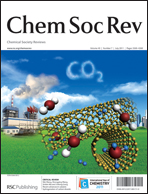Electroluminescent materials for white organic light emitting diodes
Abstract
White organic light emitting diodes (WOLEDs) are promising devices for application in low energy consumption lighting since they combine the potentialities of high efficiency and inexpensive production with the appealing features of large surfaces emitting good quality white light. However, lifetime, performances and costs still have to be optimized to make WOLEDs commercially competitive as alternative lighting sources. Development of efficient and stable emitters plays a key role in the progress of WOLED technology. This tutorial review discusses the main approaches to obtain white electroluminescence with organic and organometallic emitters. Representative examples of each method are reported highlighting the most significant achievements together with open issues and challenges to be faced by future research.


 Please wait while we load your content...
Please wait while we load your content...